Abstract
Sequential studies of platelet function were performed in dogs receiving continuous intravenous carbenicillin (CARB) or ticarcillin (TIC). Dose- and time-dependent platelet dysfunction was uniformly observed during the administration of CARB or TIC, 250 to 1000 mg/kg/24 hr. ADP-induced primary and secondary platelet aggregation was markedly inhibited within 24 to 48 hours in dogs receiving 750 or 1000 mg/kg/24 hr, but maximum impairment of aggregation did not occur until 3 to 5 days in dogs receiving 250 or 500 mg/kg/24 hr. Platelet glass bead column retention was abnormal in all dogs studied, and platelet factor 3 availability was impaired in 91%. Collagen-induced platelet aggregation was consistently impaired and the bleeding time was prolonged only during the infusion of greater than or equal to 750 mg/kg/24 hr. Plasma fibrinogen concentrations and thrombin times remained normal. CARB and TIC infusions resulted in inhibition of 14C-serotonin release and slightly decreased platelet ADP, while serotonin, ATP, and ultrastructure remained unchanged. The mutual correction of abnormal platelet aggregation by mixing CARB or TIC platelets with aspirin-treated platelets suggested that CARB and TIC inhibited the platelet release reaction by a mechanism other than inhibition of platelet cyclo-oxygenase. The platelet inhibitory properties of CARB and TIC demonstrated in this study suggest that they may be useful antithrombotic agents.
Full text
PDF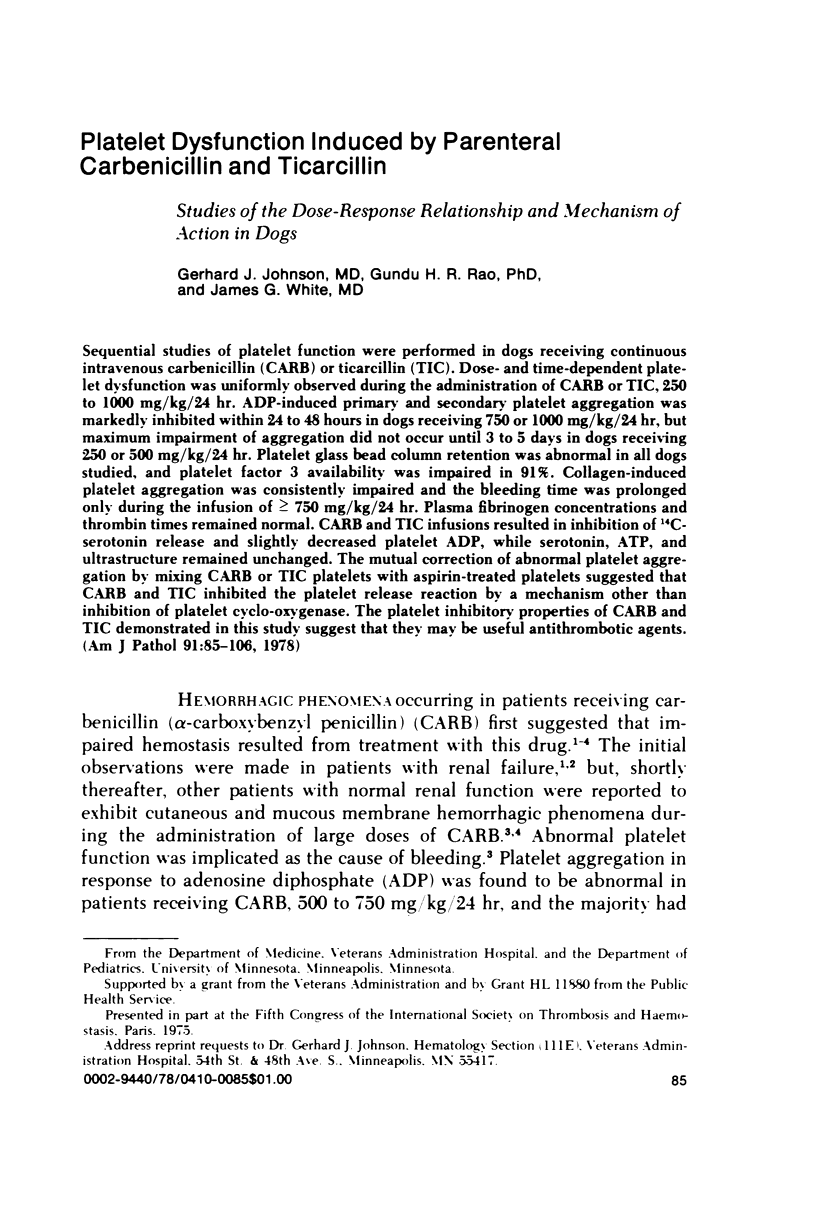
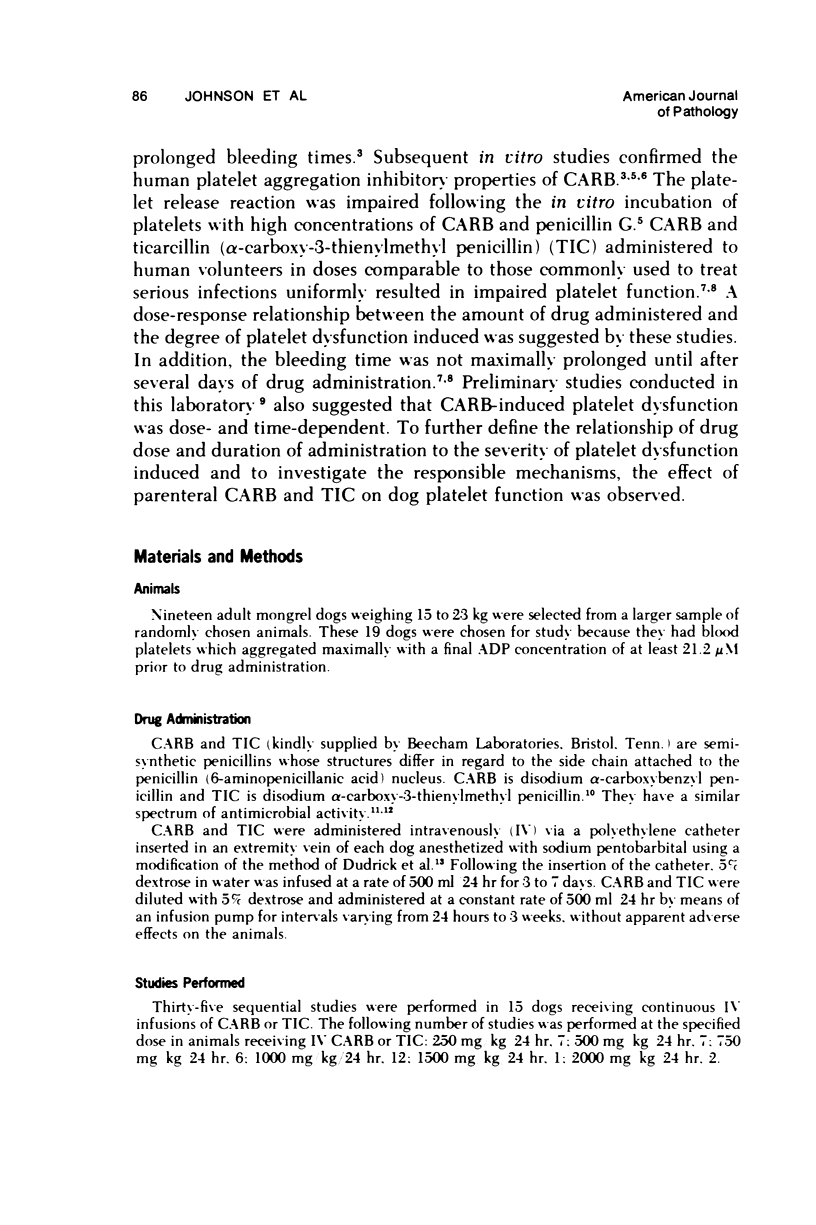
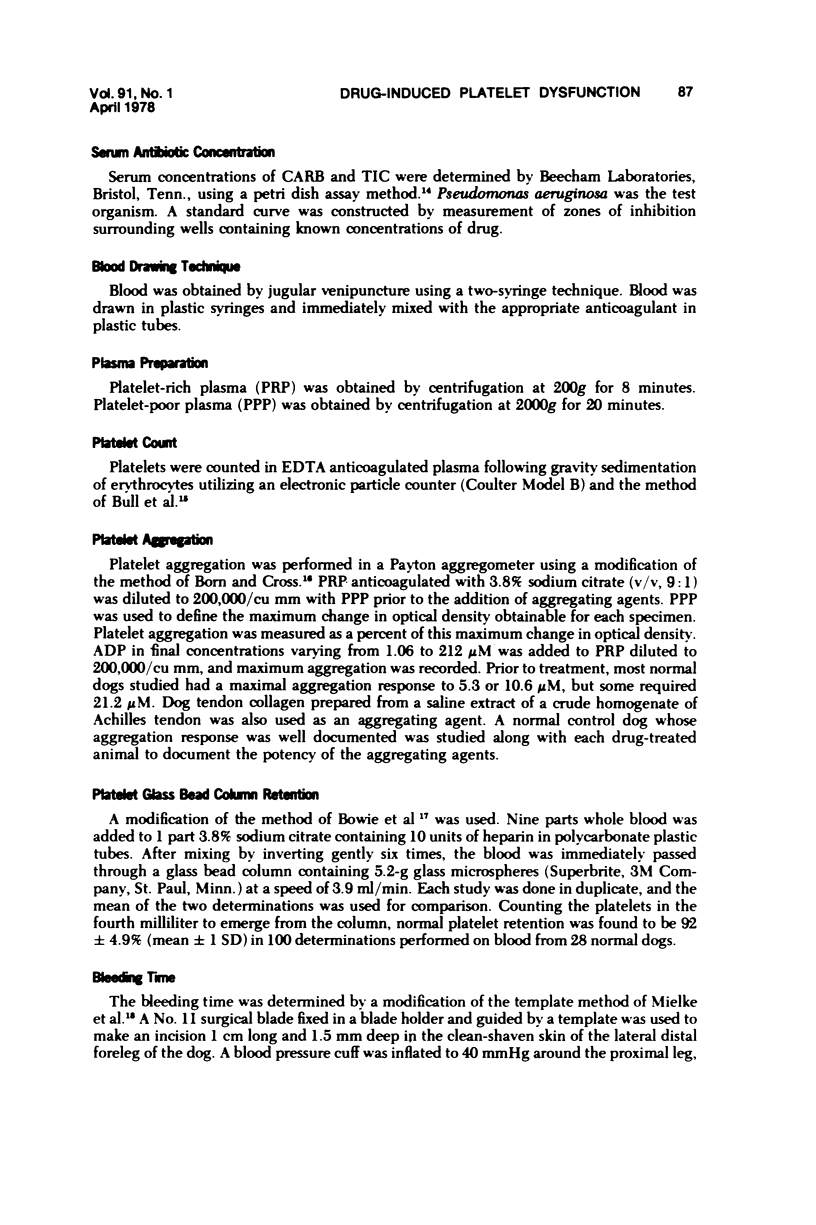
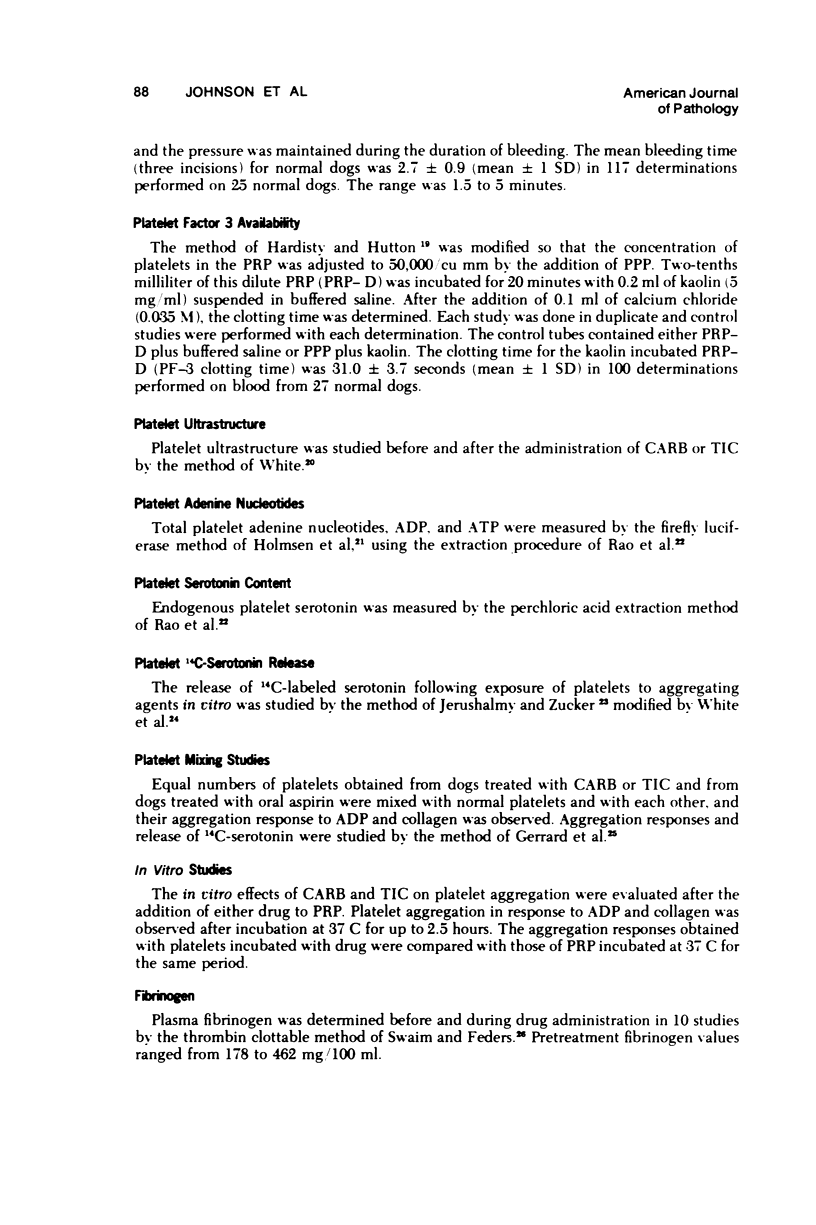
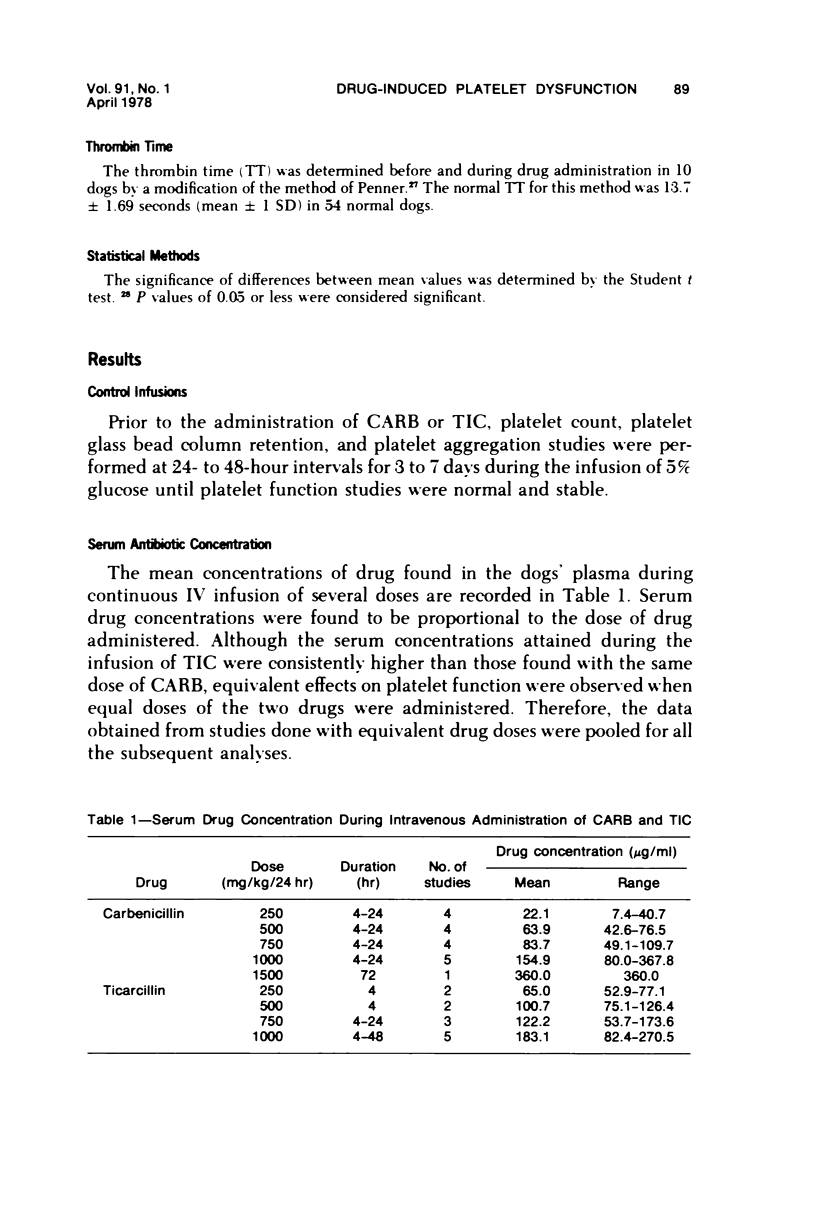
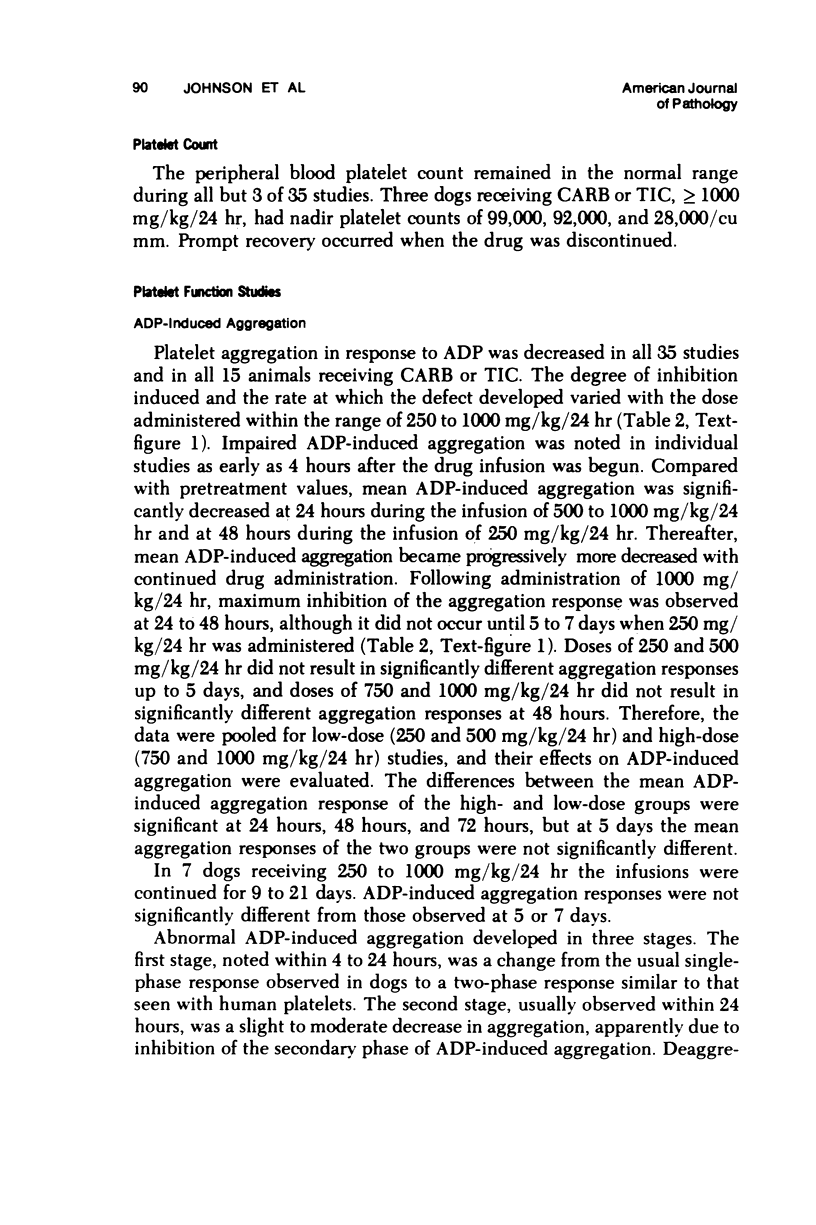

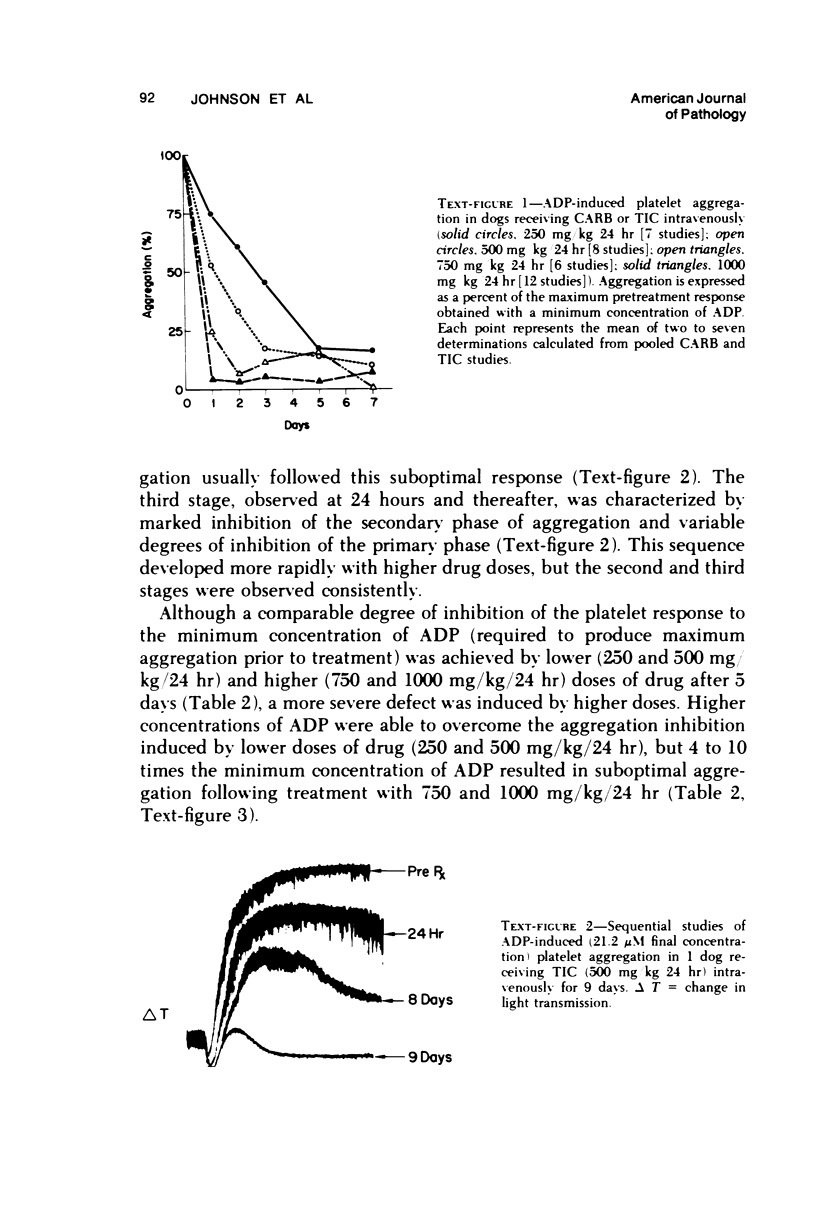
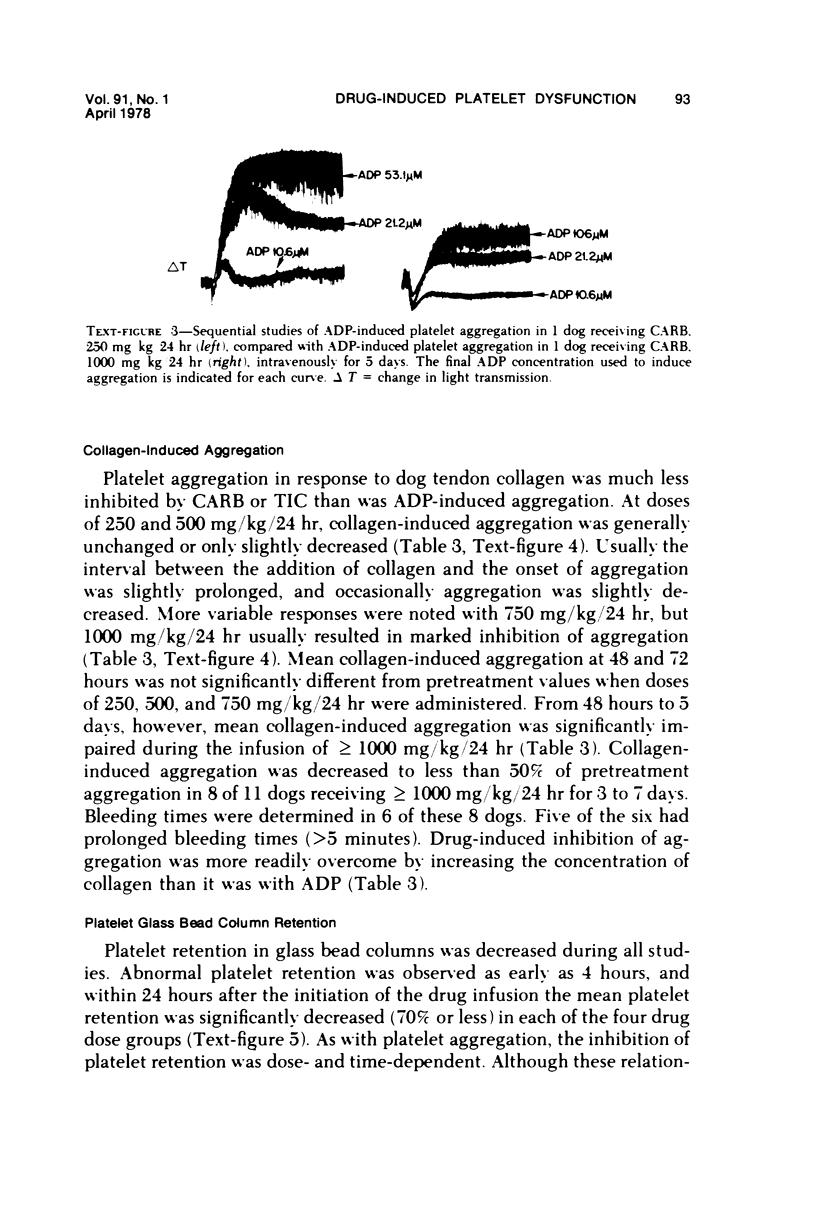

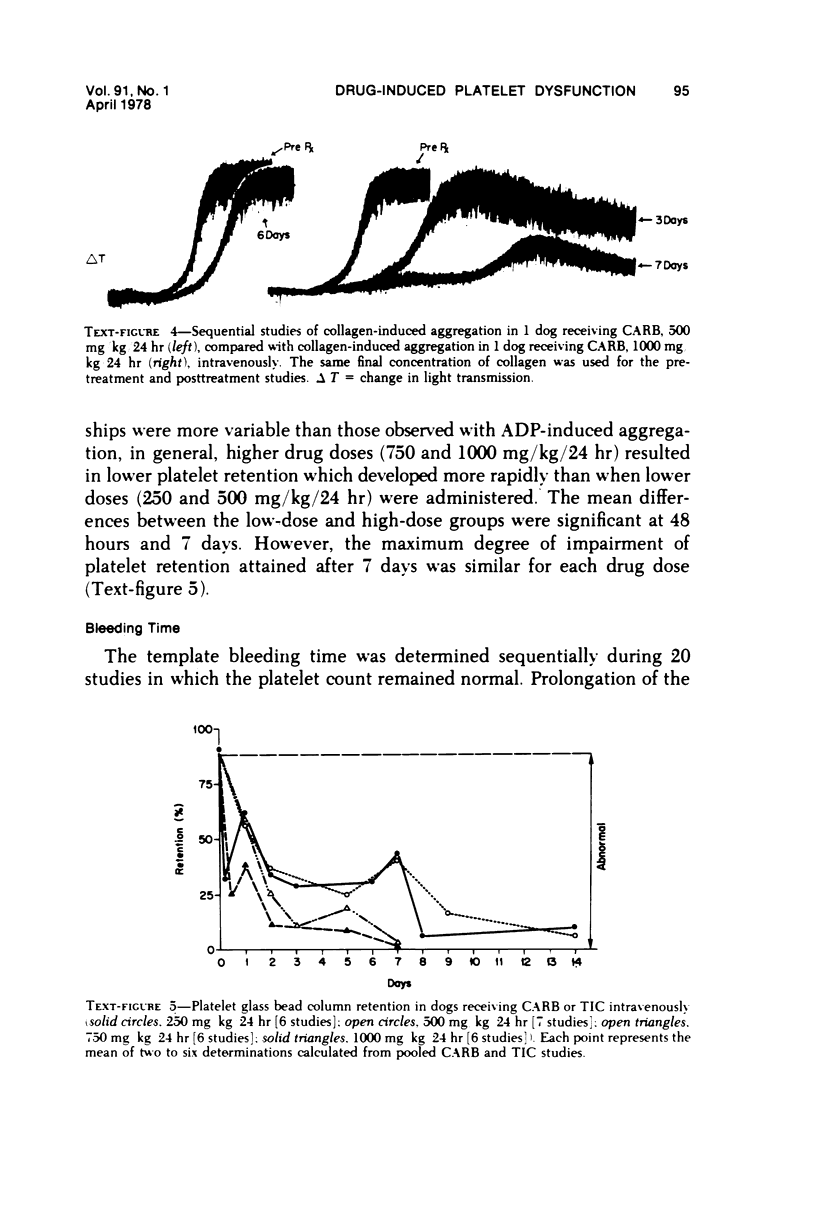
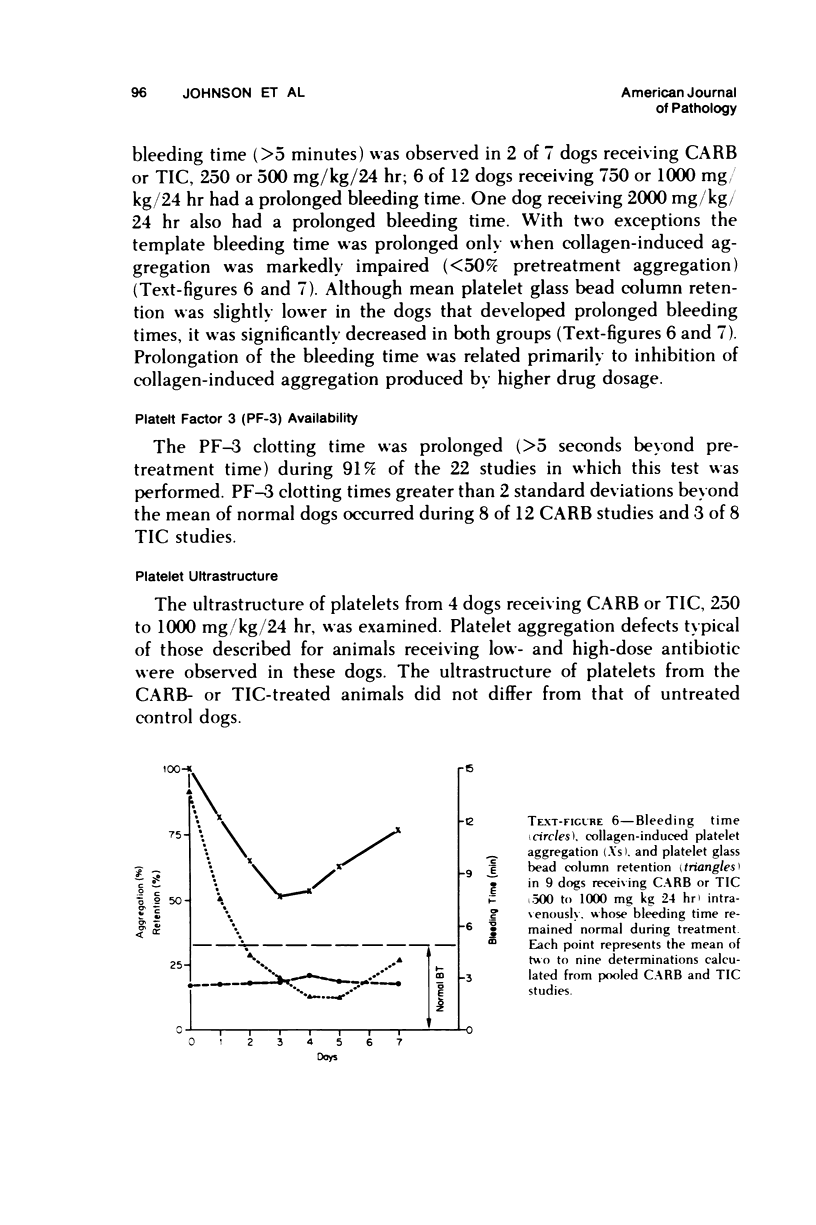
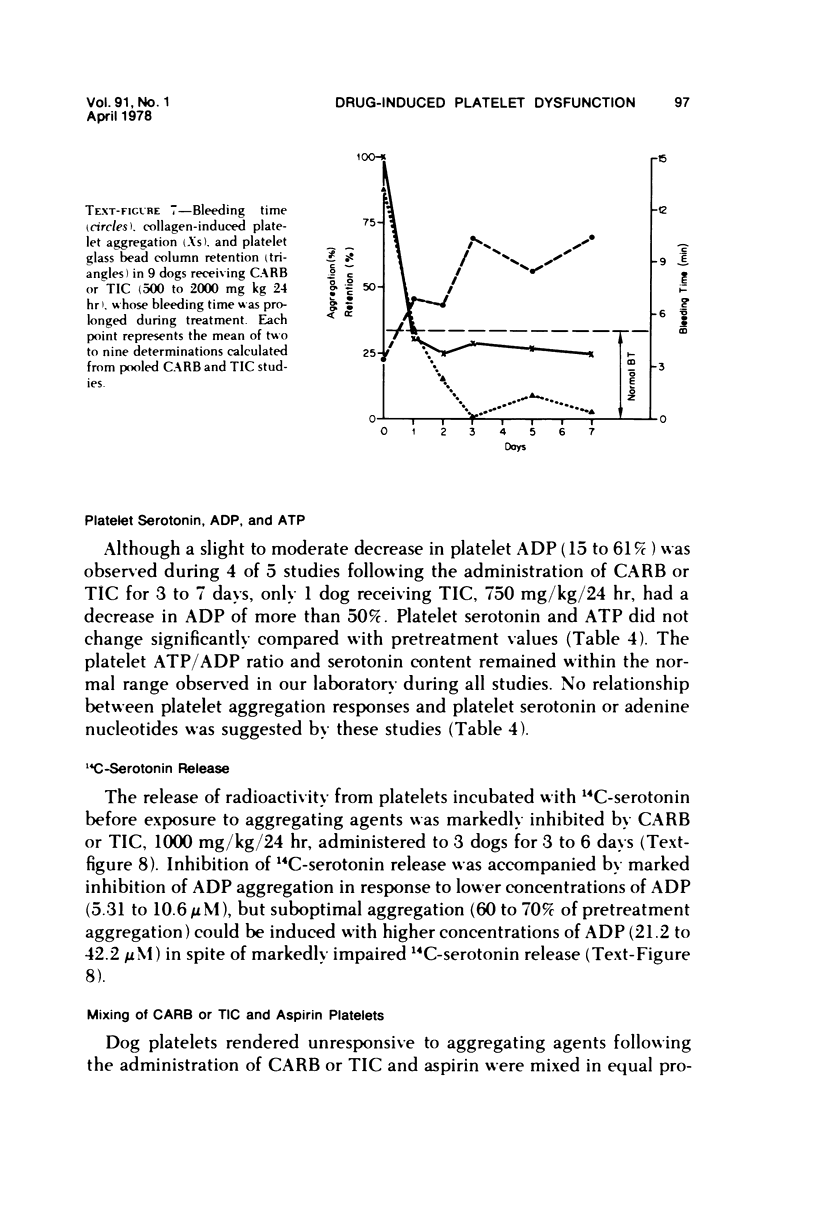
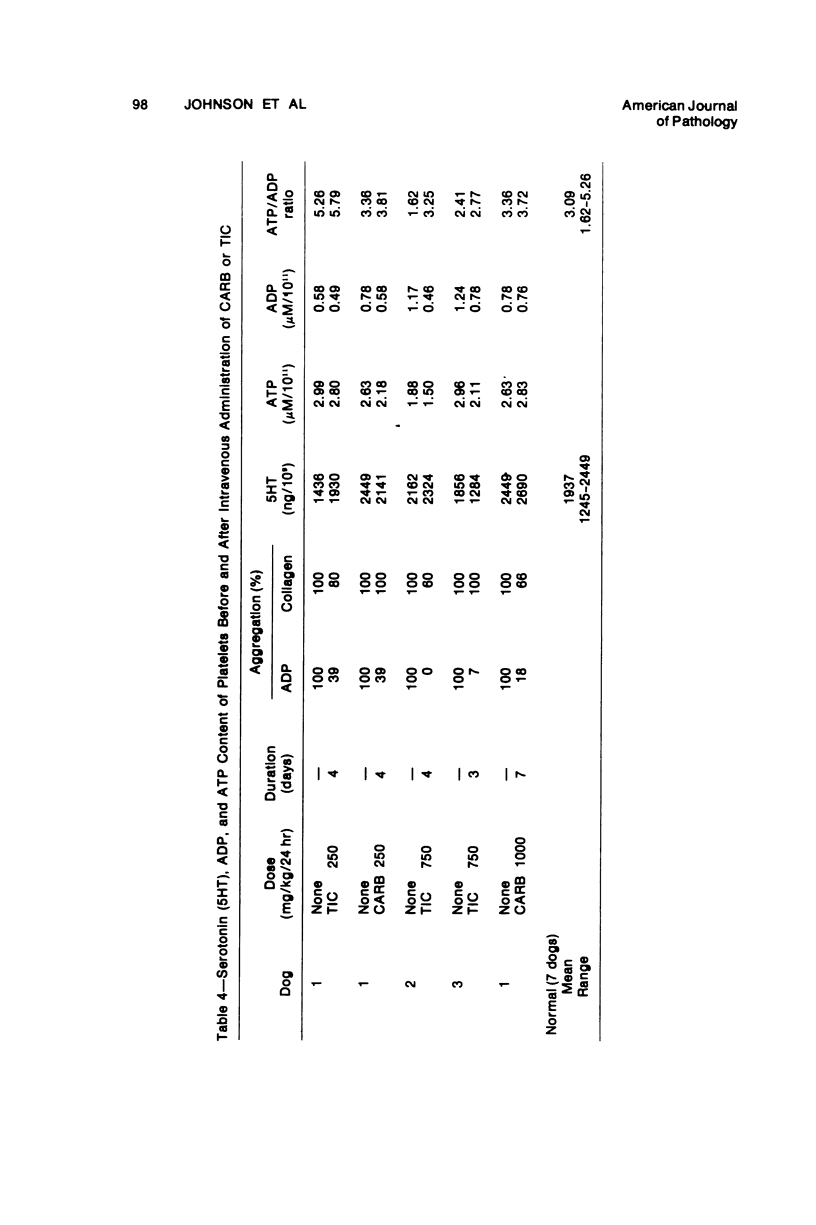
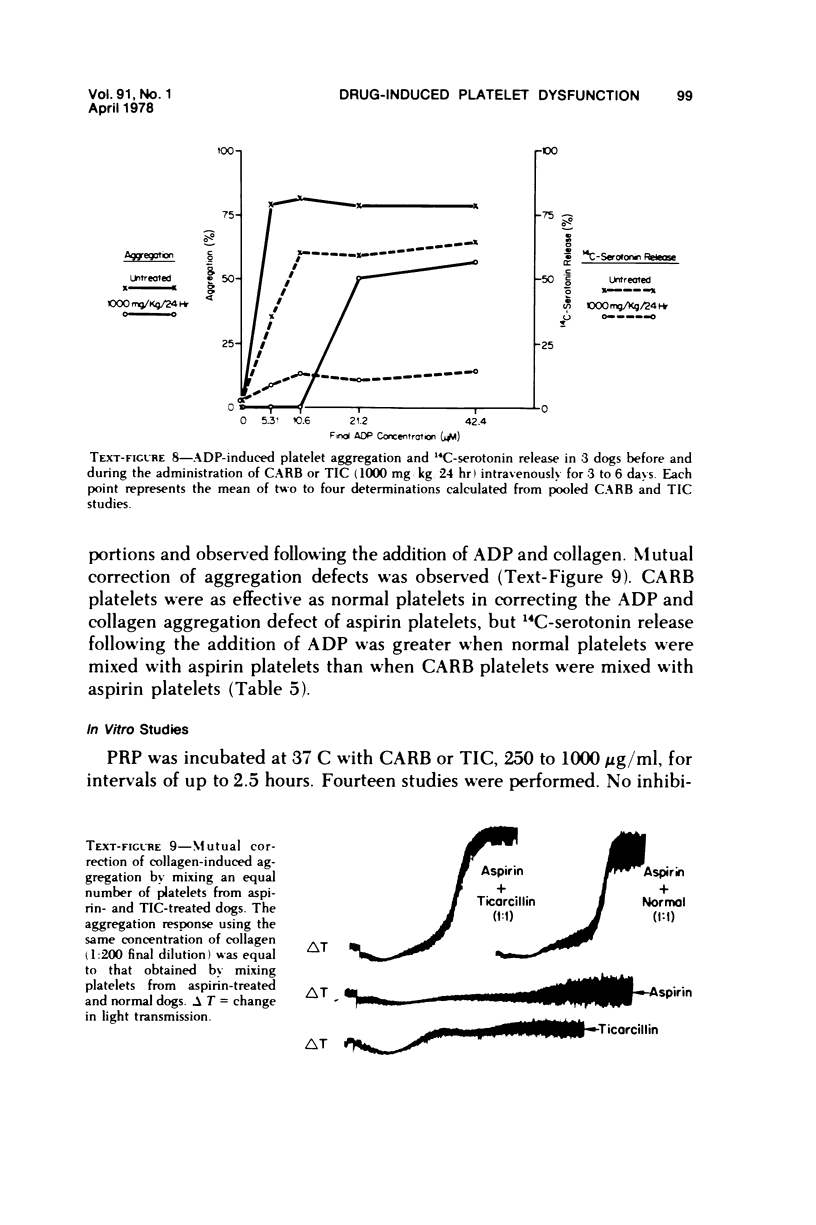
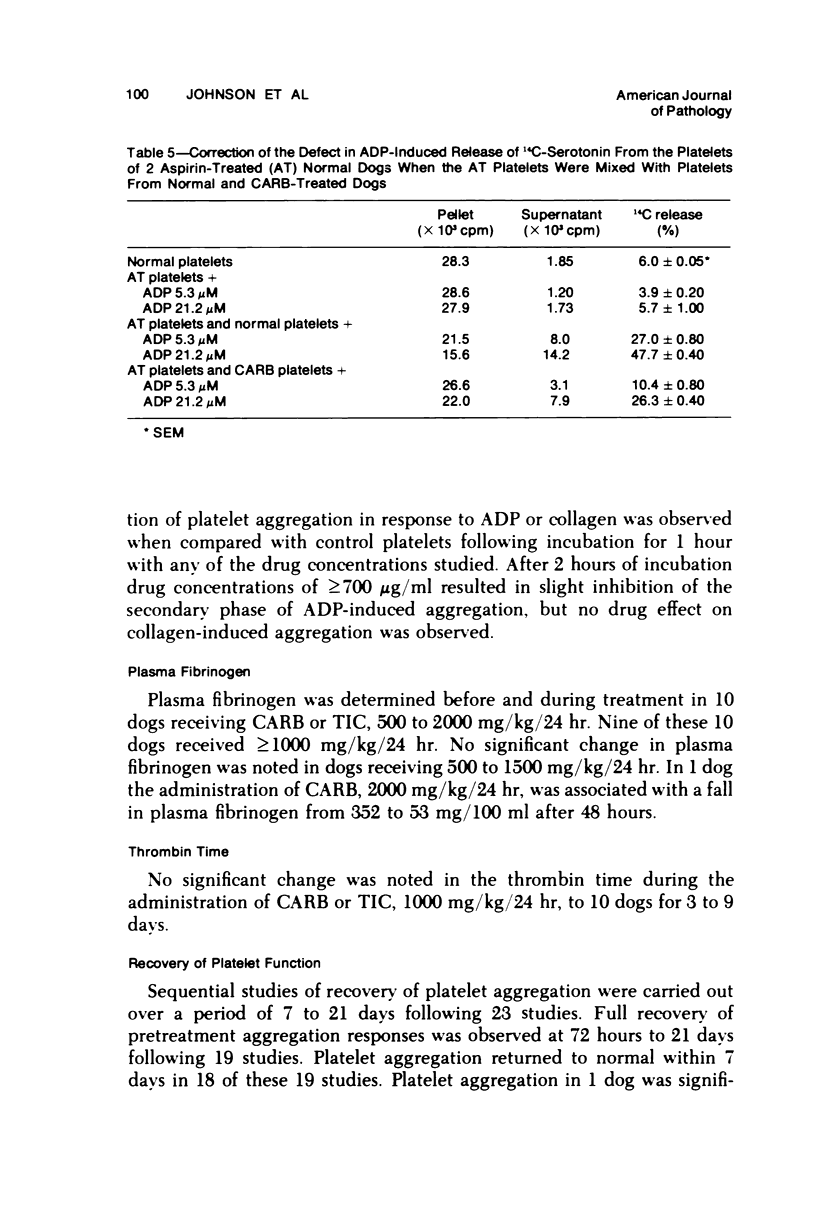
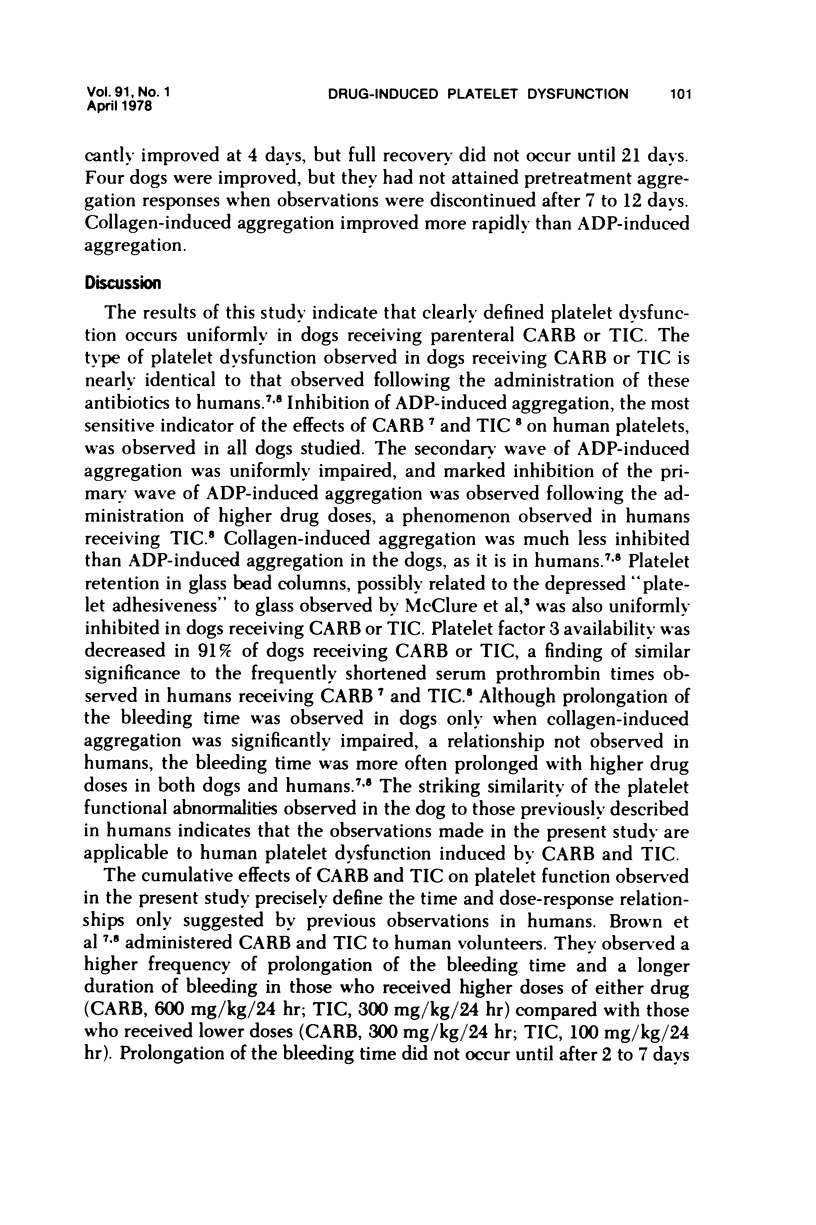
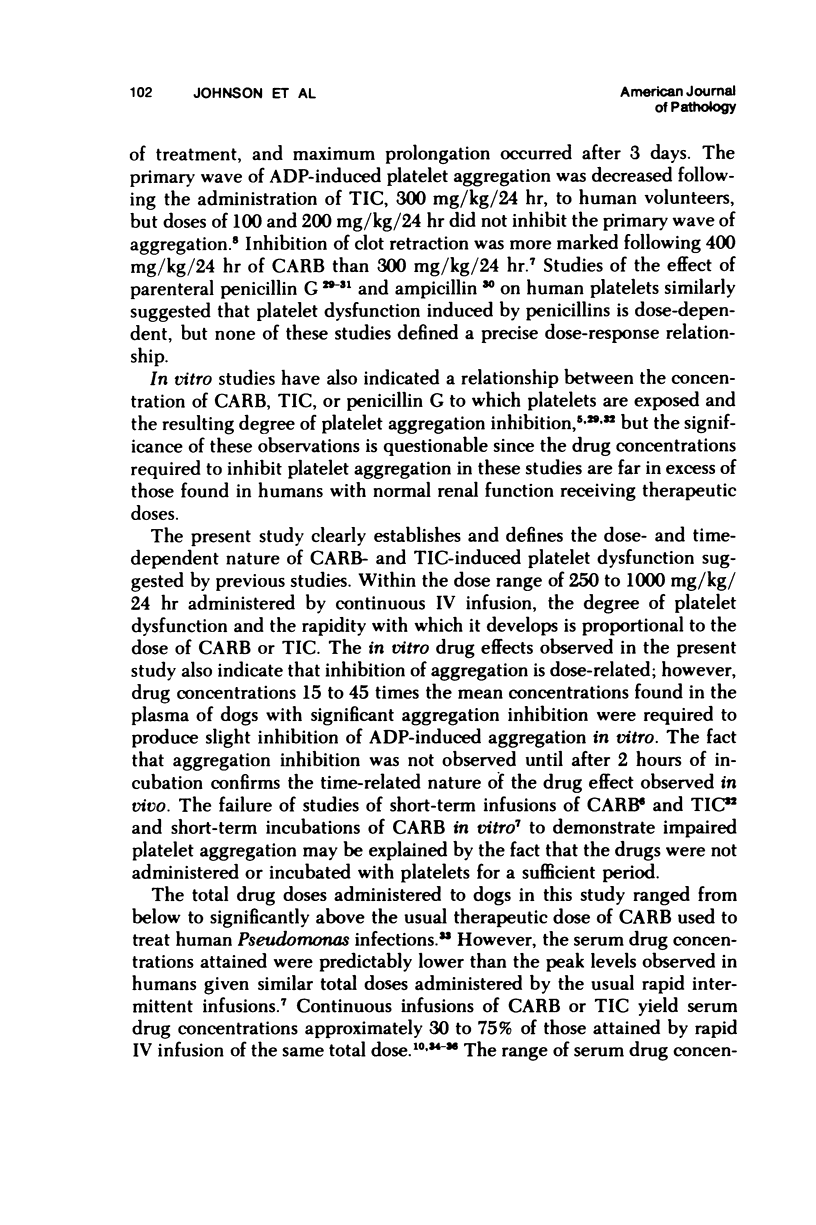
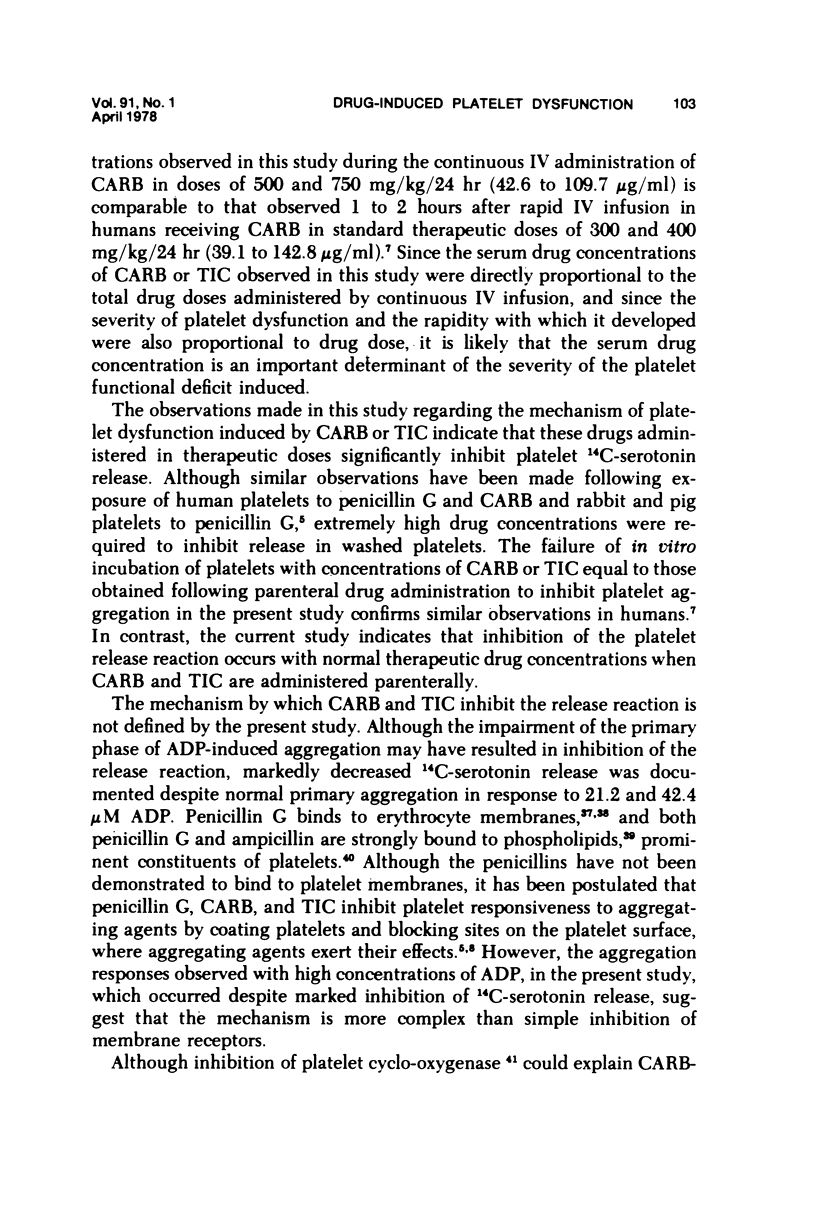
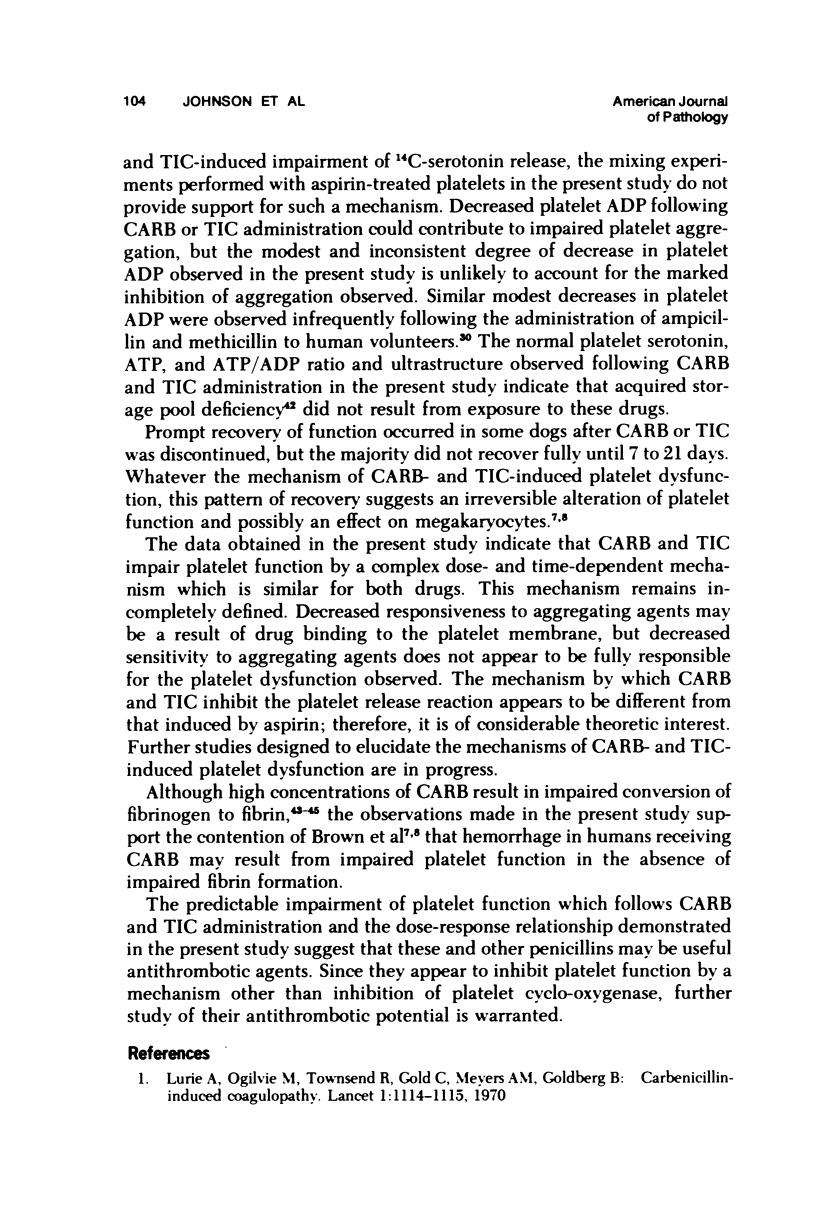

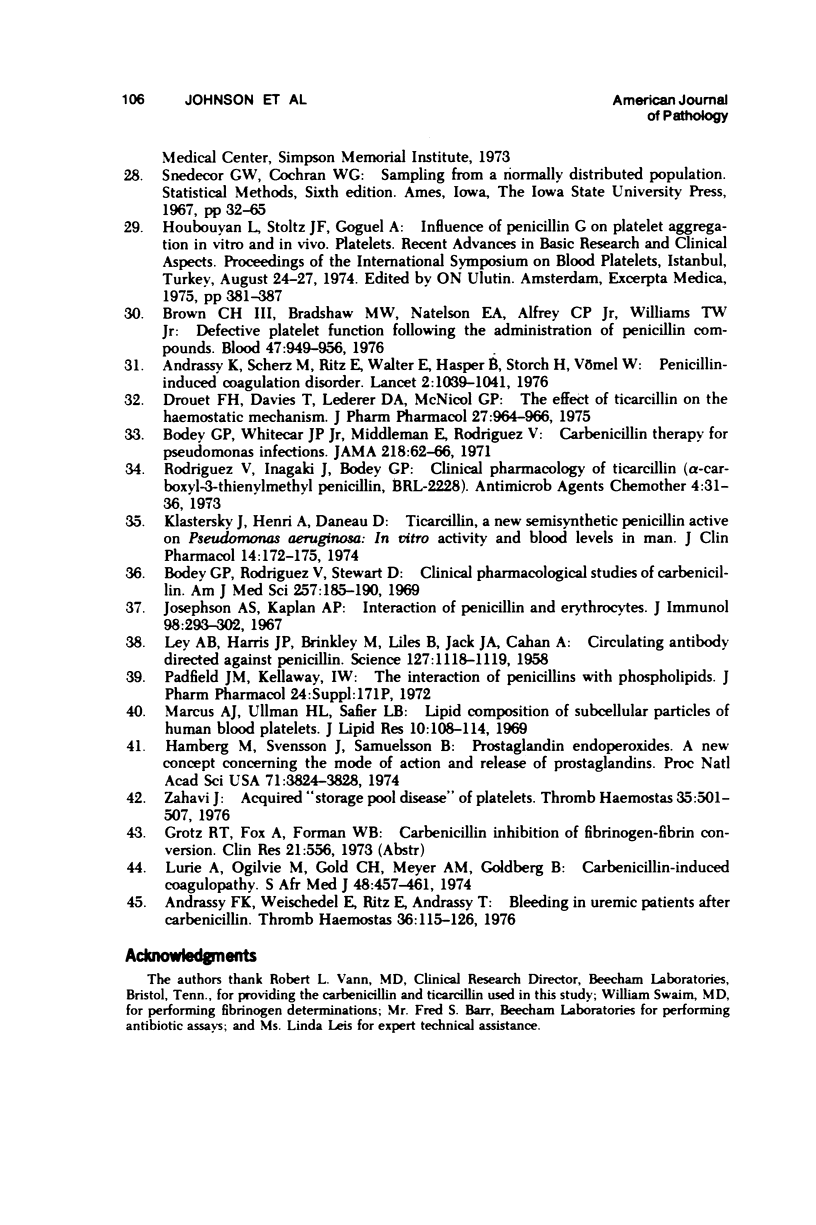
Selected References
These references are in PubMed. This may not be the complete list of references from this article.
- Andrassy K., Ritz E., Hasper B., Scherz M., Walter E., Storch H. Penicillin-induced coagulation disorder. Lancet. 1976 Nov 13;2(7994):1039–1041. doi: 10.1016/s0140-6736(76)90963-6. [DOI] [PubMed] [Google Scholar]
- Andrassy K., Weischedel E., Ritz E., Andrassy T. Bleeding in uremic patients after carbenicillin. Thromb Haemost. 1976 Aug 31;36(1):115–126. [PubMed] [Google Scholar]
- BORN G. V., CROSS M. J. THE AGGREGATION OF BLOOD PLATELETS. J Physiol. 1963 Aug;168:178–195. doi: 10.1113/jphysiol.1963.sp007185. [DOI] [PMC free article] [PubMed] [Google Scholar]
- Bodey G. P., Rodriguez V., Stewart D. Clinical pharmacological studies of carbenicillin. Am J Med Sci. 1969 Mar;257(3):185–190. doi: 10.1097/00000441-196903000-00005. [DOI] [PubMed] [Google Scholar]
- Bodey G. P., Whitecar J. P., Jr, Middleman E., Rodriguez V. Carbenicillin therapy for pseudomonas infections. JAMA. 1971 Oct 4;218(1):62–66. [PubMed] [Google Scholar]
- Bowie E. J., Owen C. A., Jr, Thompson J. H., Didisheim P. Platelet adhesiveness in von Willebrand's disease. Am J Clin Pathol. 1969 Jul;52(1):69–77. doi: 10.1093/ajcp/52.1.69. [DOI] [PubMed] [Google Scholar]
- Brown C. H., 3rd, Bradshaw M. J., Natelson E. A., Alfrey C. P., Jr, Williams T. W., Jr Defective platelet function following the administration of penicillin compounds. Blood. 1976 Jun;47(6):949–956. [PubMed] [Google Scholar]
- Brown C. H., 3rd, Natelson E. A., Bradshaw W., Williams T. W., Jr, Alfrey C. P., Jr The hemostatic defect produced by carbenicillin. N Engl J Med. 1974 Aug 8;291(6):265–270. doi: 10.1056/NEJM197408082910601. [DOI] [PubMed] [Google Scholar]
- Bull B. S., Schneiderman M. A., Brecher G. Platelet counts with the Coulter counter. Am J Clin Pathol. 1965 Dec;44(6):678–688. doi: 10.1093/ajcp/44.6.678. [DOI] [PubMed] [Google Scholar]
- Cazenave J. P., Packham M. A., Guccione M. A., Mustard J. F. Effects of penicillin G on platelet aggregation, release, and adherence to collagen. Proc Soc Exp Biol Med. 1973 Jan;142(1):159–166. doi: 10.3181/00379727-142-36980. [DOI] [PubMed] [Google Scholar]
- Drouet F. H., Davies T., Lederer D. A., McNicol G. P. The effect of ticarcillin on the haemostatic mechanism. J Pharm Pharmacol. 1975 Dec;27(12):964–966. doi: 10.1111/j.2042-7158.1975.tb10260.x. [DOI] [PubMed] [Google Scholar]
- Dudrick S. J., Wilmore D. W., Vars H. M., Rhoads J. E. Long-term total parenteral nutrition with growth, development, and positive nitrogen balance. Surgery. 1968 Jul;64(1):134–142. [PubMed] [Google Scholar]
- Gerrard J. M., White J. G., Rao G. H., Krivit W., Witkop C. J., Jr Labile aggregation stimulating substance (LASS): the factor from storage pool deficient platelets correcting defective aggregation and release of aspirin treated normal platelets. Br J Haematol. 1975 Apr;29(4):657–665. doi: 10.1111/j.1365-2141.1975.tb02751.x. [DOI] [PubMed] [Google Scholar]
- Gordon D. H. Carbenicillin in renal failure. Lancet. 1970 Aug 22;2(7669):422–422. [PubMed] [Google Scholar]
- HARDISTY R. M., HUTTON R. A. THE KAOLIN CLOTTING TIME OF PLATELET-RICH PLASMA: A TEST OF PLATELET FACTOR-3 AVAILABILITY. Br J Haematol. 1965 May;11:258–268. doi: 10.1111/j.1365-2141.1965.tb06586.x. [DOI] [PubMed] [Google Scholar]
- Hamberg M., Svensson J., Samuelsson B. Prostaglandin endoperoxides. A new concept concerning the mode of action and release of prostaglandins. Proc Natl Acad Sci U S A. 1974 Oct;71(10):3824–3828. doi: 10.1073/pnas.71.10.3824. [DOI] [PMC free article] [PubMed] [Google Scholar]
- Holmsen H., Storm E., Day H. J. Determination of ATP and ADP in blood platelets: a modification of the firefly luciferase assay for plasma. Anal Biochem. 1972 Apr;46(2):489–501. doi: 10.1016/0003-2697(72)90323-5. [DOI] [PubMed] [Google Scholar]
- Jerushalmy Z., Zucker M. B. Some effects of fibrinogen degradation products (FDP) on blood platelets. Thromb Diath Haemorrh. 1966 May 15;15(3):413–419. [PubMed] [Google Scholar]
- Josephson A. S., Kaplan A. P. Interaction of penicillin and erythrocytes. J Immunol. 1967 Feb;98(2):293–302. [PubMed] [Google Scholar]
- Klastersky J., Henri A., Daneau D. Ticarcillin, a new semisynthetic penicillin active on Pseudomonas aeruginosa: in vitro activity and blood levels in man. J Clin Pharmacol. 1974 Apr;14(4):172–175. doi: 10.1002/j.1552-4604.1974.tb01394.x. [DOI] [PubMed] [Google Scholar]
- LEY A. B., HARRIS J. P., BRINKLEY M., LILES B., JACK J. A., CAHAN A. Circulating antibody directed against penicillin. Science. 1958 May 9;127(3306):1118–1119. doi: 10.1126/science.127.3306.1118. [DOI] [PubMed] [Google Scholar]
- Lederer D. A., Davies T., Connell G., Davies J. A., McNicol G. P. The effect of carbenicillin on the haemostatic mechanism. J Pharm Pharmacol. 1973 Nov;25(11):876–880. doi: 10.1111/j.2042-7158.1973.tb09966.x. [DOI] [PubMed] [Google Scholar]
- Lurie A., Ogilvie M., Gold C. H., Meyer A. M., Goldberg B. Carbenicillin-induced coagulopathy. S Afr Med J. 1974 Mar 9;48(11):457–461. [PubMed] [Google Scholar]
- Lurie A., Ogilvie M., Townsend R., Gold C., Meyers A. M., Goldberg B. Carbenicillin-induced coagulopathy. Lancet. 1970 May 23;1(7656):1114–1115. doi: 10.1016/s0140-6736(70)92782-0. [DOI] [PubMed] [Google Scholar]
- Lynn B. Administration of carbenicillin and ticarcillin--pharmaceutical aspects. Eur J Cancer. 1973 Jun;9(6):425–433. doi: 10.1016/0014-2964(73)90107-2. [DOI] [PubMed] [Google Scholar]
- Marcus A. J., Ullman H. L., Safier L. B. Lipid composition of subcellular particles of human blood platelets. J Lipid Res. 1969 Jan;10(1):108–114. [PubMed] [Google Scholar]
- McClure P. D., Casserly J. G., Monsier C., Crozier D. Carbenicillin-induced bleeding disorder. Lancet. 1970 Dec 19;2(7686):1307–1308. doi: 10.1016/s0140-6736(70)92264-6. [DOI] [PubMed] [Google Scholar]
- Mielke C. H., Jr, Kaneshiro M. M., Maher I. A., Weiner J. M., Rapaport S. I. The standardized normal Ivy bleeding time and its prolongation by aspirin. Blood. 1969 Aug;34(2):204–215. [PubMed] [Google Scholar]
- Neu H. C., Garvey G. J. Comparative in vitro activity and clinical pharmacology of ticarcillin and carbenicillin. Antimicrob Agents Chemother. 1975 Oct;8(4):457–462. doi: 10.1128/aac.8.4.457. [DOI] [PMC free article] [PubMed] [Google Scholar]
- Padfield J. M., Kellaway I. W. The interaction of penicillins with phospholipids. J Pharm Pharmacol. 1972 Dec;24(Suppl):171P–171P. [PubMed] [Google Scholar]
- Rodriguez V., Inagaki J., Bodey G. P. Clinical pharmacology of ticarcillin (alpha-carboxyl-3-thienylmethyl penicillin, BRL-2288). Antimicrob Agents Chemother. 1973 Jul;4(1):31–36. doi: 10.1128/aac.4.1.31. [DOI] [PMC free article] [PubMed] [Google Scholar]
- Swaim W. R., Feders M. B. Fibrinogen assay. Clin Chem. 1967 Nov;13(11):1026–1028. [PubMed] [Google Scholar]
- Waisbren B. A., Evani S. V., Ziebert A. P. Carbenicillin and bleeding. JAMA. 1971 Aug 30;217(9):1243–1243. [PubMed] [Google Scholar]
- White J. G. Fine structural alterations induced in platelets by adenosine diphosphate. Blood. 1968 May;31(5):604–622. [PubMed] [Google Scholar]
- White J. G., Rao G. H., Estensen R. D. Investigation of the release reaction in platelets exposed to phorbol myristate acetate. Am J Pathol. 1974 May;75(2):301–314. [PMC free article] [PubMed] [Google Scholar]
- Zahavi J. Editorial: Acquired "storage pool disease" of platelets. Thromb Haemost. 1976 Jun 30;35(3):501–507. [PubMed] [Google Scholar]


